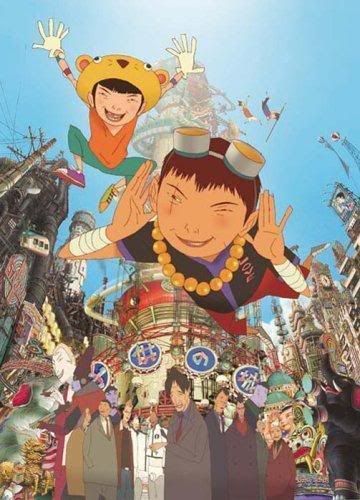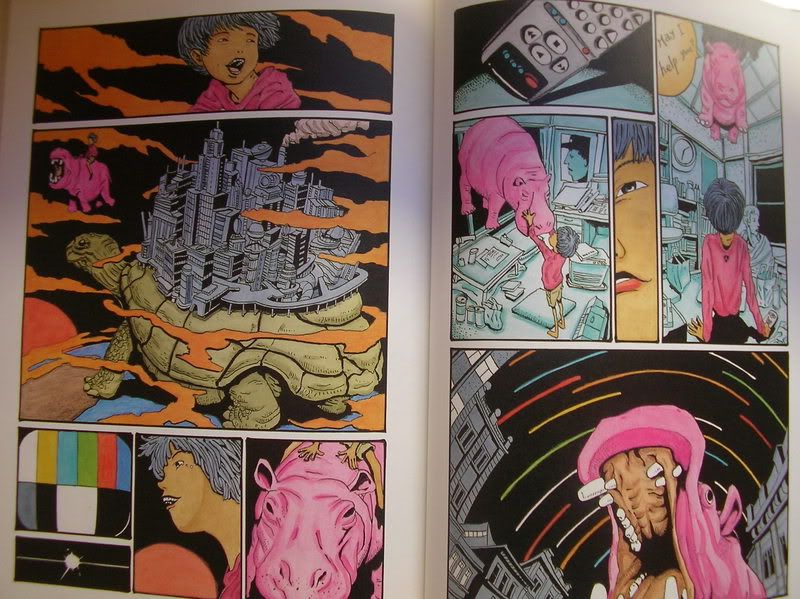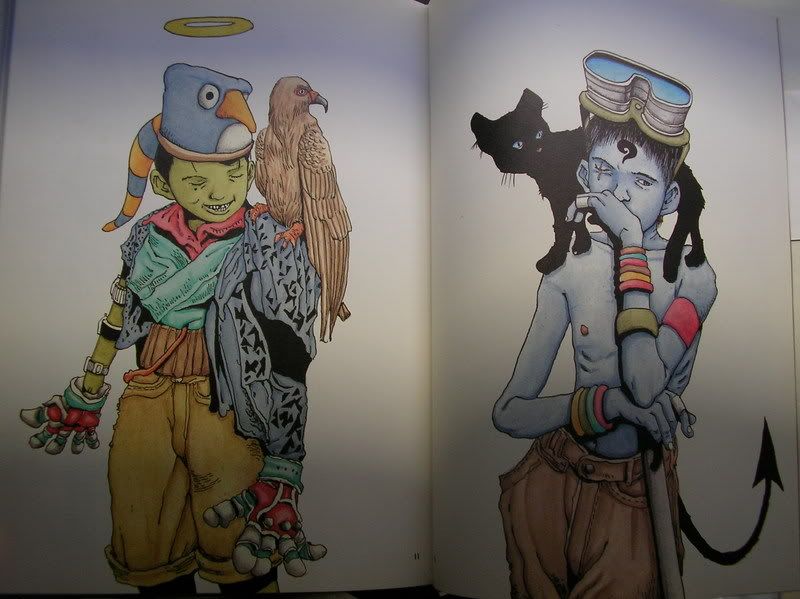
Last night I watched Tekkon Kinkreet, the anime based on the phenomenal serialized manga and graphic novel of the same name, by cult mangaka Taiyo Matsumoto. Magnificent!
I first encountered Taiyo Matsumoto on my second trip to Japan in 1998, by way of my friend Kentarou, also an artist. I picked up Matsumoto's first artbook, Hyaku (One Hundred) on Kentarou's recommendation, and then and there I was hooked.


One thing that I find done so well in Japanese manga -- Matsumoto in particular -- is the world through a child's eyes, as well as what one could argue is the ultimate conundrum of the human condition: the line between good and evil, and that blur that makes life so interesting.
Like my famed Japanese instructor in college always said, the Japanese rarely invent things, but take old ideas and make them better. In the characters Kuro (Black) and Shiro (White), Matsumoto takes two old symbols of death and purity (or, used together, the stark lack of grey area), imagines them as orphaned street kids, and drops them into his fantastic scribble-scrabble of narrow, crazed back streets in a Japan forgotten under the neon and noise.


This is a sentimentalist's Japan, laced with old school yakuza drinking in alleyway nomiya while old ladies shop for discounts at the once a month village bazaars. But this Japan is also alive with a childlike sense of wonder, and fear, as well as the impending creep of modern "progress." To me, it's the romanticized, contradictory Japan of my parents' time there -- full of wonders and mystery and knowing, yet innocent, gritty, and full of tired resignation in its promise of what is to come.
The film Tekkon Kinkreet is very true to the original works. Beautifully rendered, with a compelling story full of the importance of fidelity, acceptance, and love -- with a little bit of Zen thrown in for good measure. I was wholly impressed, especially with the successful adaptation to screen of the spirit of the mad, intricate, and dreamlike art of Matsumoto. The attention to detail was amazing. There is a background scene where a mini rocket punctures a large hot-air-type balloon in the shape of an animal head, and the way the balloon careens and then deflates, causing an explosion, is actually breathtaking. Bringing movement to White's vivid imagination is also put to the test, and it is just as phenomenal, whether in its simplicity or its schizophrenia.
Highly and enthusiastically recommended.
Be happy, be happy.



0 Comments:
Post a Comment
<< Home